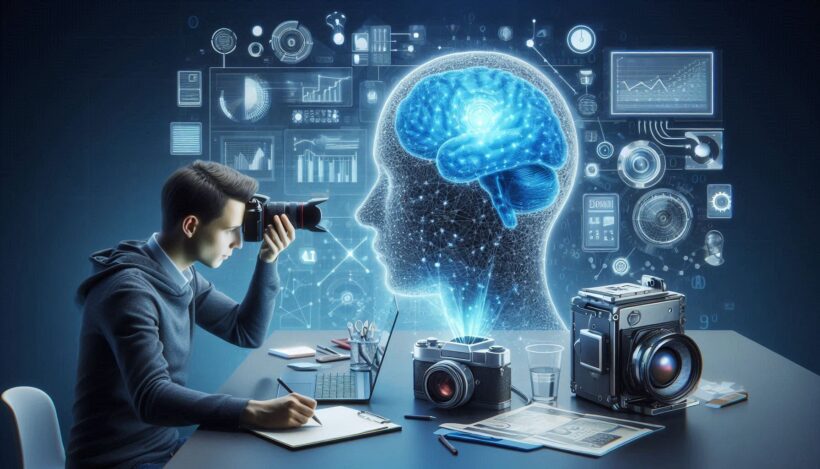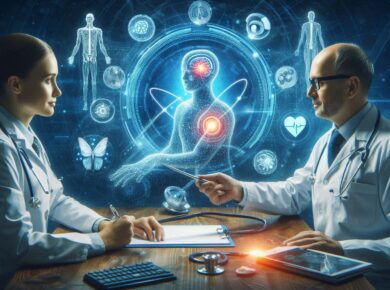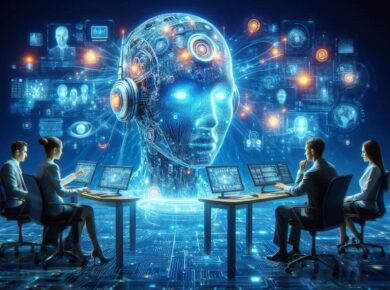Table of Contents
In the rapidly evolving landscape of technology, the terms “Artificial Intelligence” (AI) and “Machine Learning” (ML) are often used interchangeably. However, they represent distinct concepts within the realm of computer science and data processing. Understanding the differences between AI and Machine Learning is crucial for grasping how these technologies impact various industries and daily life. This article delves into what AI and ML are, their differences, and their applications.
What is Artificial Intelligence (AI)?
Artificial Intelligence refers to the simulation of human intelligence processes by computer systems. This broad field encompasses various technologies that enable machines to perform tasks that typically require human intelligence, such as reasoning, learning, problem-solving, and understanding language. AI systems can analyze data, make decisions, and even interact with users in a human-like manner.
Key Features of AI
- Automation of Tasks:
AI automates repetitive and time-consuming tasks, enhancing efficiency across various industries. This includes everything from customer service chatbots to automated data entry. - Natural Language Processing (NLP):
AI enables machines to understand, interpret, and respond to human language. Applications of NLP can be seen in virtual assistants like Siri and Alexa, as well as in translation services. - Computer Vision:
AI allows computers to interpret and understand visual information from the world. This capability is essential for applications like facial recognition and medical imaging analysis.
What is Machine Learning (ML)?
Machine Learning is a subset of AI that focuses on the development of algorithms that allow computers to learn from and make predictions or decisions based on data. Instead of being explicitly programmed for specific tasks, ML systems improve their performance as they are exposed to more data over time.
Key Features of Machine Learning
- Data-Driven Learning:
ML algorithms analyze large datasets to identify patterns and trends, which they use to make predictions or classifications. The more data these algorithms process, the more accurate they become. - Types of Learning:
ML encompasses various learning methods, including:- Supervised Learning: Involves training a model on labeled data, where the desired output is known.
- Unsupervised Learning: Involves finding patterns in data without predefined labels.
- Reinforcement Learning: Involves training an agent to make decisions by rewarding desired actions and penalizing undesired ones.
- Applications Across Industries:
ML is used in diverse fields such as finance for fraud detection, healthcare for diagnosing diseases, and marketing for customer segmentation.
Key Differences Between AI and Machine Learning
While AI and ML are closely related, several fundamental differences set them apart:
1. Scope
- AI is the broader concept encompassing any machine that can mimic human behavior and perform tasks intelligently. It includes various subfields, including robotics, NLP, and computer vision.
- Machine Learning is a specific approach to achieving AI, focusing on data-driven learning and predictive modeling.
2. Functionality
- AI systems can operate based on rules and logic, mimicking human-like behavior without necessarily learning from data.
- Machine Learning systems require data to learn and improve, making them adaptive and capable of evolving over time.
3. Application
- AI applications can range from simple rule-based systems to complex neural networks.
- Machine Learning is primarily concerned with algorithms and statistical models that enable computers to learn from data.
Real-World Examples
To illustrate the differences between AI and Machine Learning, consider the following examples:
- AI Example: A virtual personal assistant (like Google Assistant) can understand spoken commands and provide relevant responses, performing tasks such as setting reminders or controlling smart devices. This involves various AI components, including NLP and speech recognition.
- Machine Learning Example: A recommendation system on streaming platforms like Netflix uses machine learning algorithms to analyze user viewing habits and suggest movies or shows based on preferences. The system learns from user interactions to enhance recommendations over time.
Conclusion
Understanding the distinction between Artificial Intelligence and Machine Learning is vital for grasping how these technologies function and their implications for the future. While AI encompasses a broad range of technologies that aim to replicate human intelligence, Machine Learning is a focused approach that leverages data to enable computers to learn and adapt. As both fields continue to advance, their combined potential will undoubtedly lead to groundbreaking innovations across industries, shaping how we live and work in the years to come.






